In the enchanting world of interior design, color blocking stands out as a creative yet approachable technique to transform any living room into a cozy retreat. Whether you’re a seasoned decorator with a flair for bold statements or a beginner taking your first steps into the art of home styling, “8 Cozy Color Blocking Tips For Living Rooms” will unlock the secrets to crafting a space that radiates warmth and personality. This guide is your passport to a living room filled with vibrant harmonies and striking contrasts, offering a fresh perspective on how color can define and enhance your space.
Brimming with practical insights, these tips will empower you to make confident choices that reflect your unique style and taste. Discover how strategic color placement can create visual interest, improve the room’s layout, and even influence the mood of your home. With our guide in hand, you’ll experience the joy of seeing your living room evolve into a haven of comfort and style. Embrace the journey of interior design, where small changes lead to big transformations, and let these ideas inspire you to infuse your living space with creativity and warmth.
Combine Warm and Cool Tones
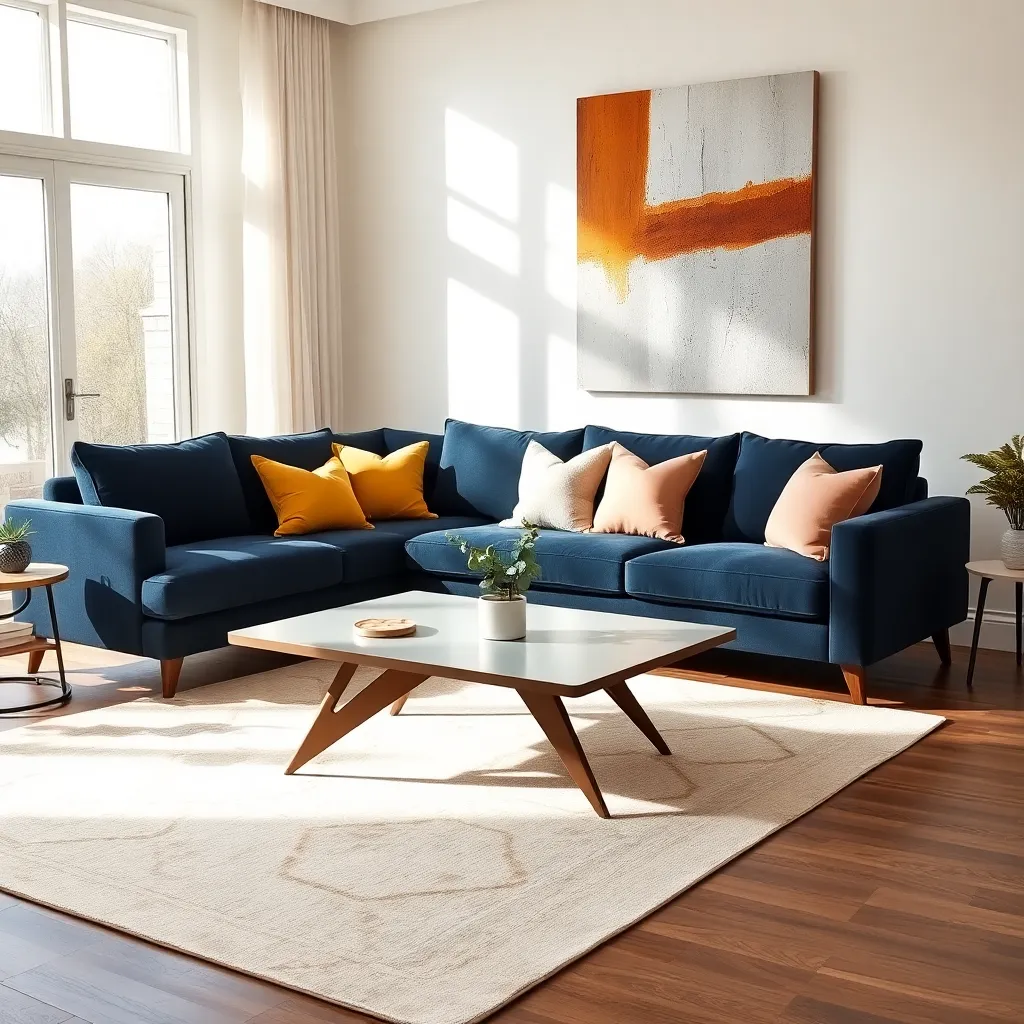
To successfully blend warm and cool tones in your living room, start by selecting a dominant color scheme. Choose a warm base color like terracotta or mustard, and then introduce cool accents such as navy or teal through throw pillows or artwork to create balance.
Placement is key when merging these contrasting tones; aim to distribute them evenly throughout the space. Use furniture, like a cool-toned sofa against a warm-colored wall, to create a cohesive look that feels intentional and harmonious.
For those ready to take it a step further, consider incorporating metallic finishes that complement both warm and cool tones. Brass fixtures and silver accents can bridge the gap, providing an additional layer of sophistication and depth to your design.
To ensure versatility, opt for materials that naturally offer warmth or coolness, such as a wooden coffee table paired with a glass vase. This approach allows for seasonal updates with minimal effort, keeping your living room both stylish and adaptable.
Add Texture with Layered Rugs
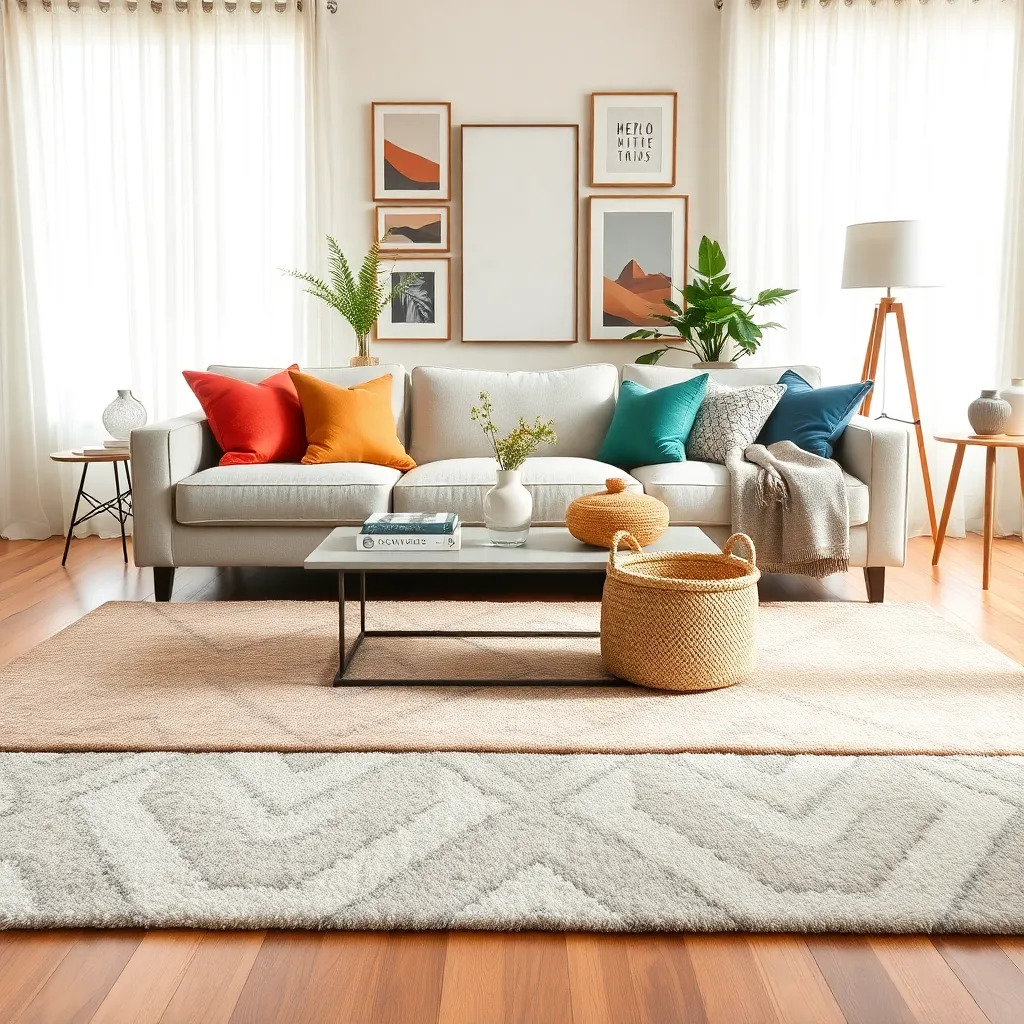
Layering rugs is an excellent way to add depth and texture to your living room while embracing the cozy color blocking trend. Start by choosing a larger, neutral base rug, such as a jute or sisal, to create a versatile foundation that complements various colors and patterns.
Next, add a smaller, more vibrant or patterned rug on top to introduce visual interest and define a specific area, like a seating zone. Opt for rugs with complementary colors or patterns that echo the hues used in your room’s color blocking scheme for a cohesive look.
Consider mixing different textures to enhance the sensory experience in your space. Pair a plush, high-pile rug with a flat-weave or kilim to create a dynamic contrast that invites both visual and tactile exploration.
For advanced decorators, experimenting with asymmetrical placement can add a modern twist to your layered rug setup. Try angling the top rug or slightly offsetting it to create a sense of movement and intrigue within your design.
Highlight Zones Using Bold Hues
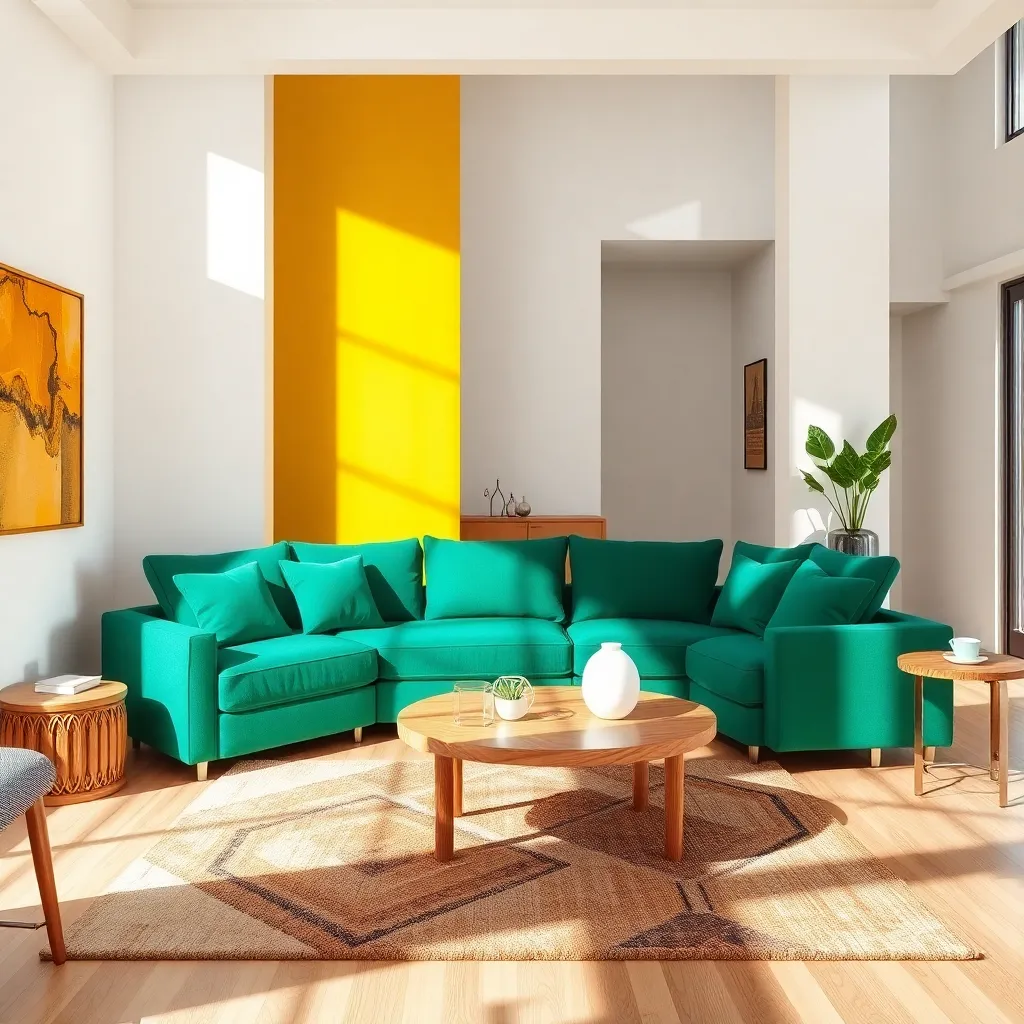
Color blocking with bold hues is an effective way to create distinct zones within your living room, enhancing both function and style. Start by identifying the primary areas in your living room, such as the seating area, reading nook, or entertainment space, and use different colors to define these sections. This technique not only adds visual interest but also helps to organize the layout, making it feel more intentional and cohesive.
When selecting colors, consider using a bold hue for one wall in each zone, which acts as an accent and focal point. For instance, a rich teal can make a stylish backdrop for a reading nook, while a vibrant mustard could highlight your entertainment area. Pair these bold colors with neutral furnishings to prevent the space from feeling overwhelming, ensuring that the colors remain the main attraction.
To add depth and balance, incorporate complementary colors through accessories like cushions, throws, and artwork. This approach ties the zones together and prevents them from feeling disjointed. For example, if you’ve chosen a bold navy for one area, consider using coral accents to add contrast and warmth.
Advanced decorators can elevate this technique by experimenting with different finishes and textures within each zone. Opt for a matte finish on walls for a subtle look or a high-gloss finish to reflect light and add dimension. By mixing materials—like a velvet sofa against a bold painted wall—you can create a dynamic interplay of textures that enhances the overall aesthetic.
Balance Neutrals with Accents
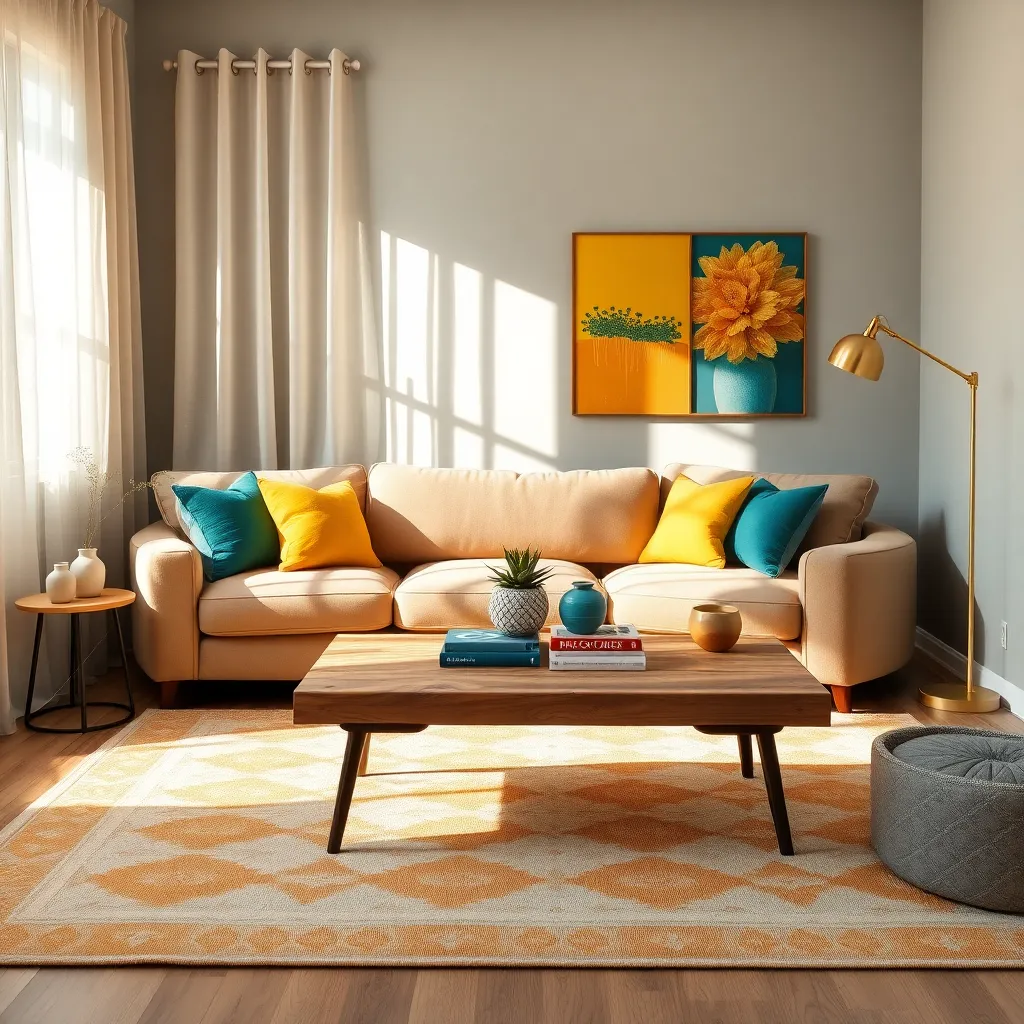
Achieving a harmonious look in your living room starts with balancing neutral tones and accent colors. Begin by selecting a neutral base for your larger furniture pieces, like a beige sofa or a gray rug, which provides a versatile canvas for adding vibrant accents.
To enhance the depth of your decor, consider incorporating textured materials such as linen or wool in your neutral elements. These materials not only add visual interest but also create a cozy atmosphere, perfect for a welcoming living room environment.
Introduce accents through cushions, throws, and artwork in bold colors, like mustard or teal, to energize the space. Strategically place these accents around the room to draw the eye and create a balanced distribution of color.
For a more advanced approach, experiment with layering different shades of the same color in your accents. This technique can add sophistication and depth, making your living room feel both curated and cohesive.
Incorporate Soft Lighting Elements
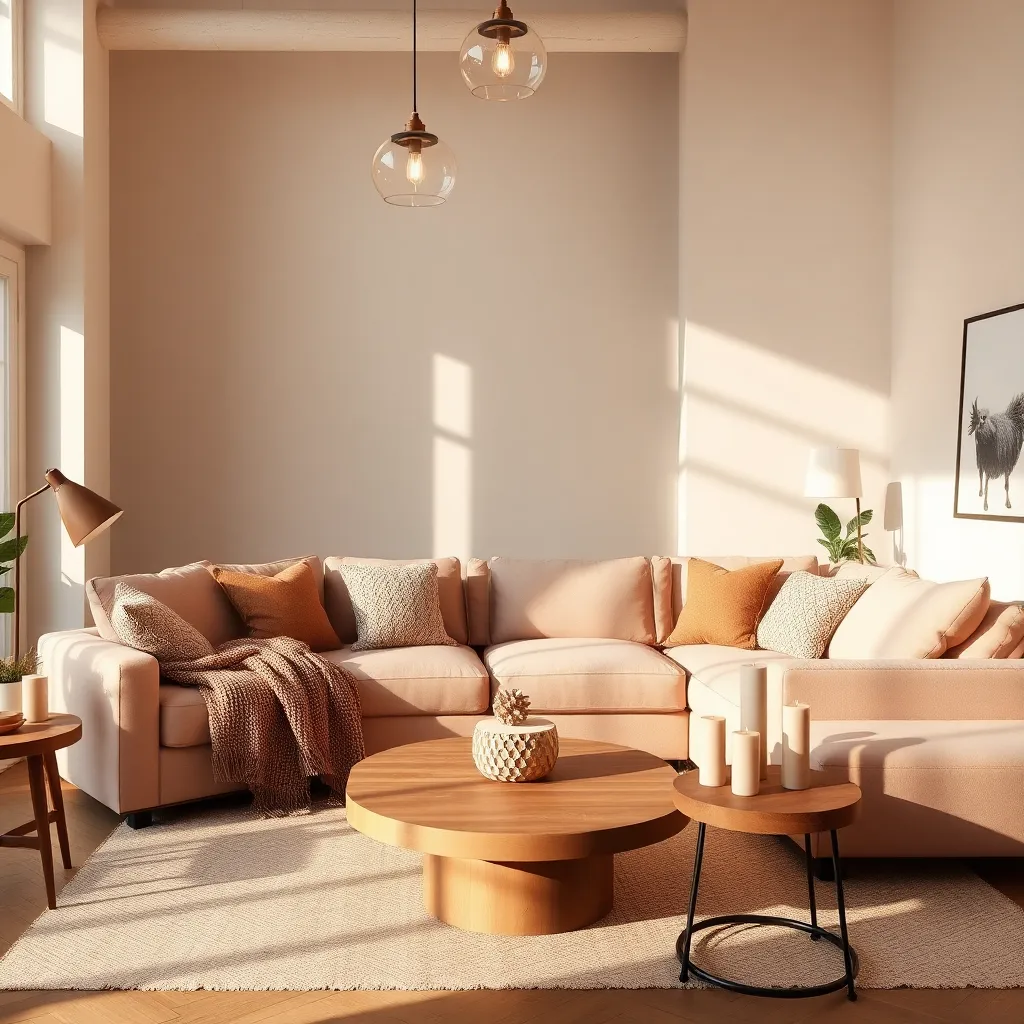
To create a cozy atmosphere with color blocking, integrating soft lighting elements is essential. Begin by choosing lamps with fabric shades that diffuse light gently, creating a warm, inviting glow throughout the room.
Consider using floor lamps strategically placed in corners or beside seating areas to add depth and dimension. This not only highlights your color blocks but also enhances the overall ambiance of your living space.
Layering different types of lighting can add sophistication to your color-blocked room. Combine floor lamps with table lamps on side tables to create zones of light, accentuating your chosen color palette and enhancing the cozy feel.
For an advanced touch, incorporate dimmable overhead lights or wall sconces to adjust the mood as needed. These versatile options allow you to highlight specific areas, like a reading nook or an art piece, making the space feel more curated and personal.
Use Art to Anchor Colors
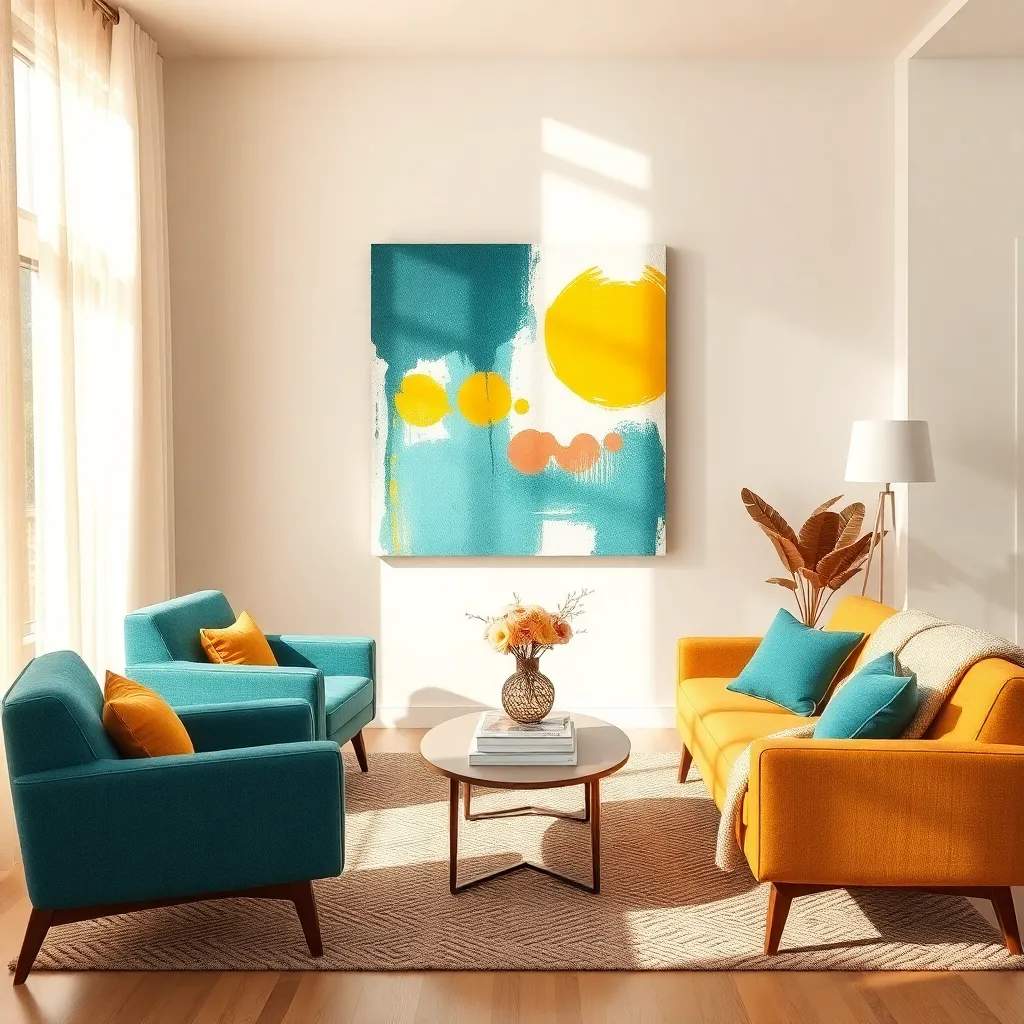
Art can be a powerful tool to anchor your color scheme in a living room. Selecting a bold piece of art as your focal point allows you to pull colors from the artwork to use throughout the room, creating a cohesive look.
Choose pieces that resonate with the mood you wish to set—vibrant hues for energy or muted tones for calmness. A large painting above the sofa or a striking gallery wall can serve as an excellent starting point for your color palette.
Once you have selected your artwork, use it to guide your choice of accent colors. You might pick up a secondary color from the art for your throw pillows or rugs, ensuring these elements echo the painting and bring depth to the space.
For a more advanced technique, experiment with textures that complement the artwork’s style. If your art piece has a smooth finish, consider incorporating soft, plush fabrics to contrast, like velvet cushions or a woolen throw, adding layers of interest to your design.
Mix Patterns for Depth
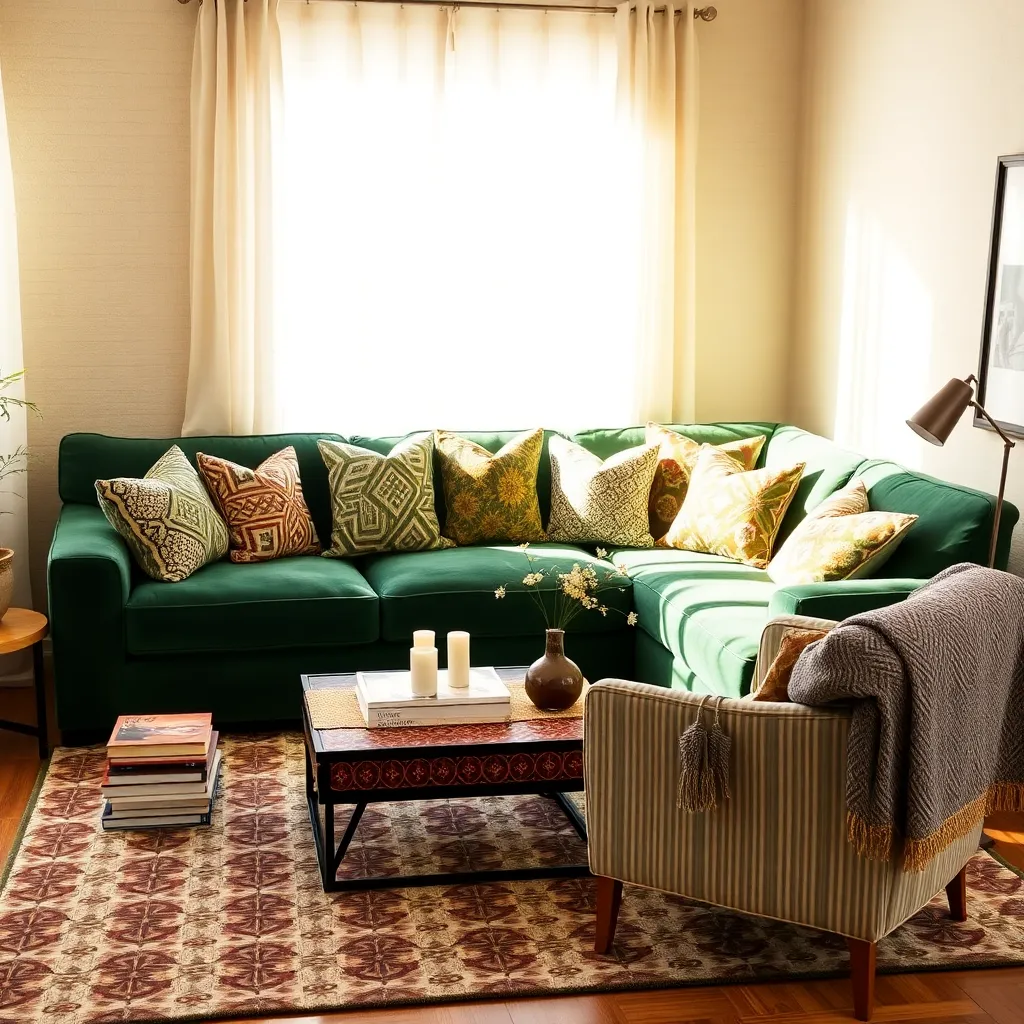
Mixing patterns in your living room can add depth and interest without overwhelming the space. Start with a neutral base, such as a grey sofa or beige rug, to ground the room and let your patterns stand out.
Choose a dominant pattern that will set the tone for your room, like a large floral or geometric print on a statement piece, such as an accent chair or wallpaper. Complement this with smaller, less busy patterns on cushions or throws to create visual harmony.
For beginners, start with two or three patterns in complementary colors to ensure cohesiveness. Pairing a striped throw with polka dot pillows in the same color family is a safe yet stylish way to experiment.
Experienced decorators might consider layering patterns with different textures to add even more depth. For instance, a velvet damask pillow paired with a woven tribal rug not only mixes patterns but also introduces new tactile elements.
Keep the scale of the patterns in mind; mixing large and small-scale patterns can create a balanced look. Place larger patterns on bigger surfaces like a rug or window treatment, and reserve smaller patterns for accents to avoid a cluttered feel.
Frame Spaces with Contrasting Borders
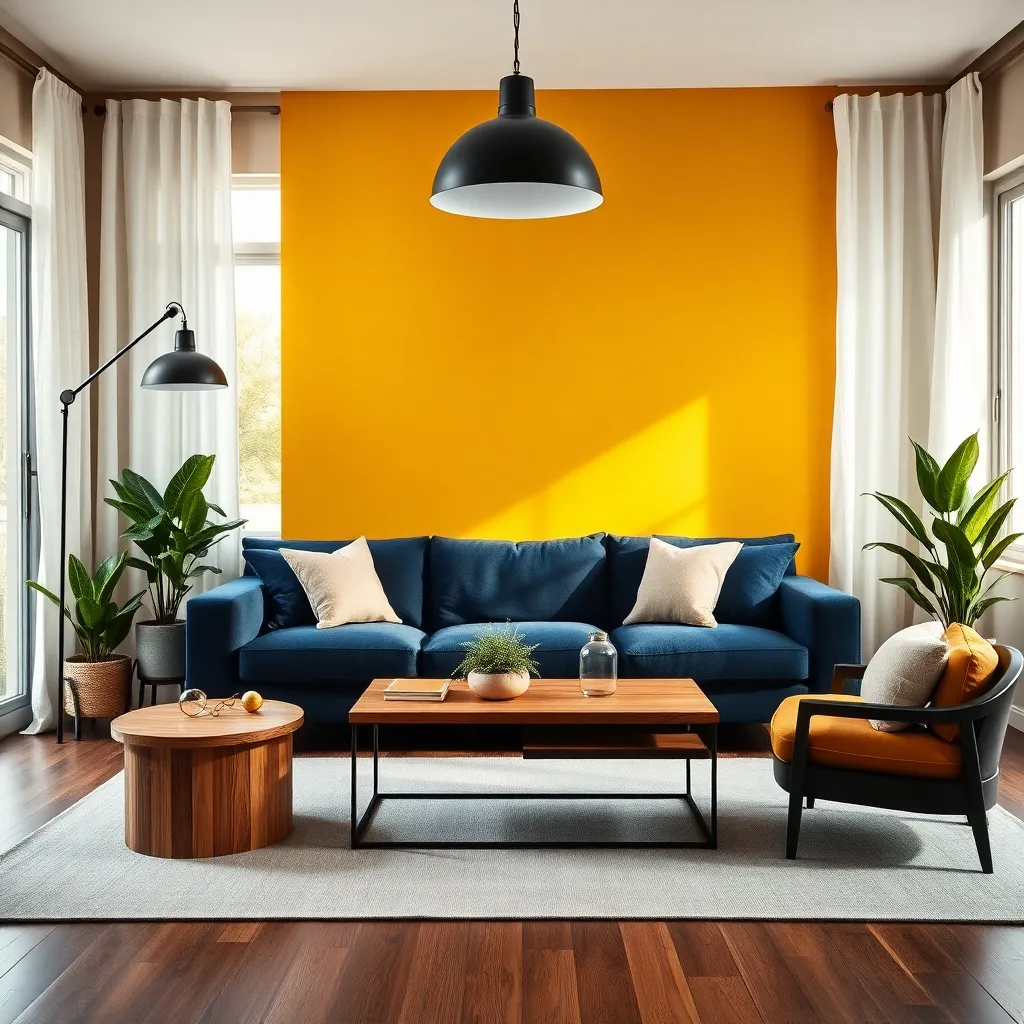
To create a cozy and visually appealing living room, consider using contrasting borders to frame spaces. This technique involves painting or using wallpaper with contrasting colors around the edges of walls, windows, or doorways to define and highlight specific areas.
Begin by selecting colors that complement your existing decor yet stand out enough to create a distinction. For beginners, a simple yet effective combination is using a neutral wall color with a bold border, such as a soft gray with a navy blue or a beige with a deep forest green.
Placement is key when working with contrasting borders. Consider framing a seating area by painting the edges of the wall behind your sofa in a darker shade, which can create a cozy nook effect and make the space feel more intimate.
For those with a more advanced skill set, experiment with textured materials for your borders, such as wood paneling or metallic strips. These elements not only add contrast but also introduce an additional layer of texture, enhancing the room’s overall depth and appeal.
Conclusion: Growing Success with These Plants
In the quest to transform your living room into a cozy haven, we’ve explored eight color-blocking tips that not only enhance your space but also nurture the bonds within it. From selecting complementary colors that harmonize with your partner’s preferences to strategically placing bold accents that spark lively conversations, each tip is a testament to the subtle art of creating an environment where relationships can flourish. We discussed balancing warm and cool tones to cultivate comfort, using textures to add depth, and incorporating personal touches that reflect your shared journey.
Now, it’s time to take action: pick one tip and apply it today. Whether it’s rearranging a few cushions or experimenting with a new color palette, these small changes can make a significant impact. As you embark on this creative endeavor, remember to prioritize open communication and collaboration—key ingredients in any successful relationship.
Don’t forget to save or bookmark this article, so you can revisit these tips whenever your living space—and relationship—needs a refreshing boost. By fostering a nurturing environment, you’re laying the foundation for lasting relationship success, ensuring that your home remains a sanctuary of love and understanding.
